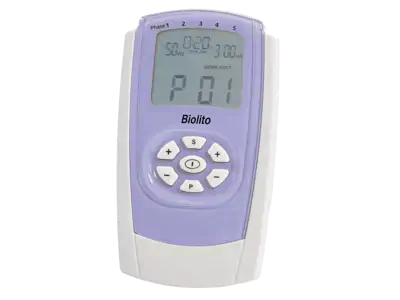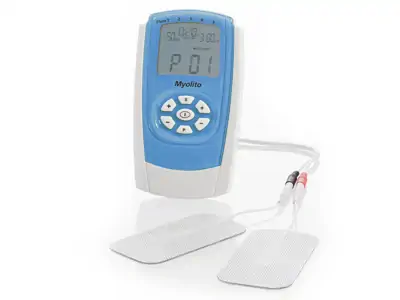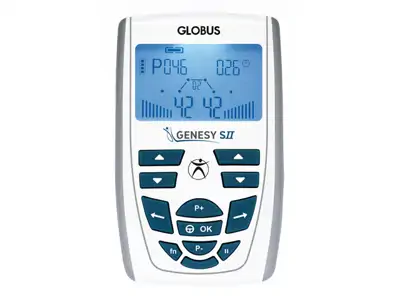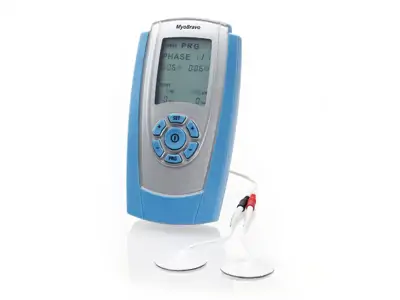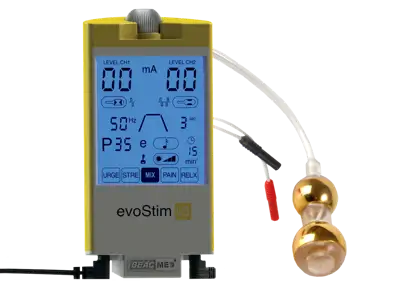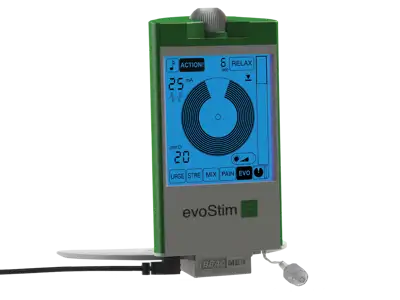Incontinence
Incontinence is a difficulty in holding urine and/or faeces, where the faeces/urine involuntarily drips.
Different forms of incontinence
Stress incontinence. It is triggered by laughing, sneezing, coughing, sitting up and generally any situation where the bladder is under pressure. It is caused by weakening of the pelvic floor and sphincter muscles.
Urge urinary incontinence: a sudden, intense urge to urinate that you are unable to suppress. You have very little time to reach the toilet before the "accident" occurs. The cause is increased activity of the bladder muscles.
Mixed incontinence.
Fecal incontinence: the control and maintenance of bowel movements is disturbed.
Treatment of incontinence
Stress incontinence: the aim is to strengthen the pelvic floor and sphincter muscles through muscle stimulation. The treatment should be given daily or several times a day, 2-3 weeks until the first signs of effects are noticed. Results are expected after 2-3 months of persistent treatment.
Urge incontinence: the aim of the treatment is to "calm" and relax overactive muscles and "re-train" them to normal activity. This can be done by electrotherapy, which is different from the treatment used for stress incontinence. Again, treatment should be given at a similar frequency. Results can be expected in a similar time.
Mixed incontinence: Treatment programmes alternate between stress and urge forms. The above applies.
Fecal incontinence: sphincters are strengthened through a probe inserted into the anus. The duration of the treatment and the bleeding results are similar.
Treatment methods
Strengthening the muscles of the pelvic floor (Kegel exercises, gymnastics, intimate gymnastics): exercises to strengthen the pelvic floor and bladder muscles. For at least 40 to 60 minutes a day, voluntary contractions of the pelvic floor muscles should be created. This is not easy because the muscles to be tightened are not easy to 'find'. The advantage of intimate gymnastics is that it costs nothing. The disadvantage is that you have to be very patient until the first positive effects appear, it can take months before the first positive signs appear. And if you stop, the effects will wear off in a few weeks.
Muscle training with biofeedback. The device sends feedback on the quality and quality of the muscle contraction. It helps you perform the exercise correctly and "find" the right muscles.
Functional electrostimulation: during electrostimulation, mild electrical impulses are used to induce contraction of the pelvic floor muscles. The treatment uses a probe that can be inserted into the vagina or rectum. The pulse thus directly stimulates the muscles that close the bladder and the pelvic floor, with a much stronger effect than intimate gymnastics. Electrostimulation is effective for stress, urge and mixed forms of incontinence.
ETS (biofeedback controlled stimulation): These devices use an electro-stimulator in addition to a feedback sensor. When the device detects a voluntary muscle contraction, it uses a muscle stimulation pulse to induce the contraction, significantly improving the effectiveness of the exercise. Thus, the positive effects of the treatment can be observed after only 2-3 weeks.
